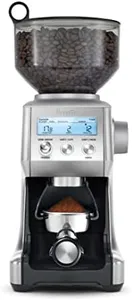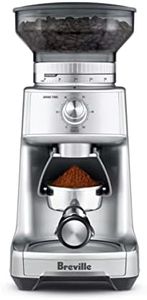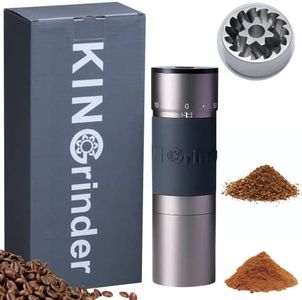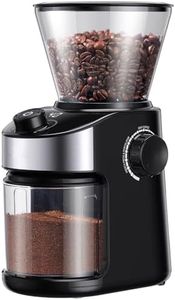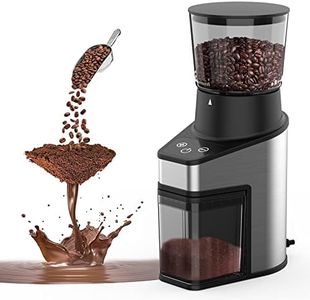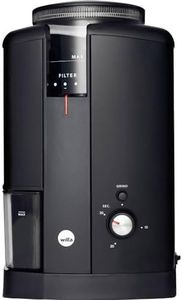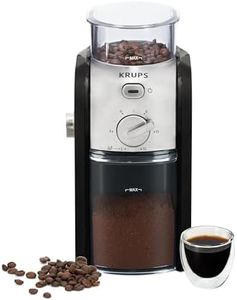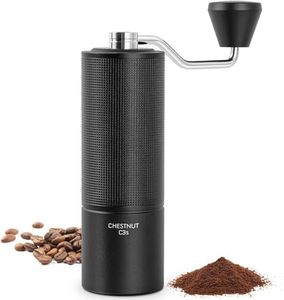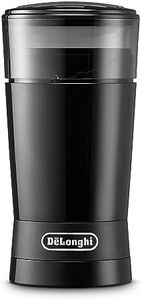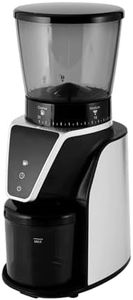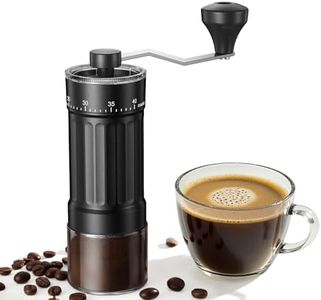We Use CookiesWe use cookies to enhance the security, performance,
functionality and for analytical and promotional activities. By continuing to browse this site you
are agreeing to our privacy policy
10 Best Burr Coffee Grinder
From leading brands and best sellers available on the web.Buying Guide for the Best Burr Coffee Grinder
When you're shopping for a burr coffee grinder, you're making a great choice for improving your coffee quality. Burr grinders are preferred over blade grinders because they crush the beans evenly, allowing you to better control the size of your coffee grounds. This matters a lot, since the grind size directly affects the flavor and extraction of your coffee. To make sure you end up with a grinder that suits your tastes and brewing habits, it's important to consider a few key features and understand what they mean for your daily cup.Burr Type (Flat vs. Conical)Burr grinders use either flat or conical burrs to crush coffee beans. Flat burrs use two parallel rings, while conical burrs have a cone-shaped inner piece fitting into a ring. Flat burrs often provide even grounds and are favored for precision, but might be noisier and can retain more coffee inside. Conical burrs tend to be quieter, can reduce mess, and are easier to clean. If you want simple maintenance and less fuss, conical is a good choice. If you are more concerned with super-even grinds — often important for espresso — flat may appeal to you.
Grind Size SettingsGrind size settings are the adjustment points that let you control how fine or coarse the grounds are. The more settings there are, the more control you have, and this flexibility is particularly helpful if you use different brewing methods (like espresso, French press, or pour-over). Some grinders have a handful of basic settings, while others offer dozens of incremental steps. If you only make one style of coffee, simple settings may work. If you like to experiment or brew in several ways, look for many fine adjustments.
Grind ConsistencyGrind consistency refers to how uniform the coffee grounds are in size. More consistent grinds lead to more even extraction and better-tasting coffee. High-end grinders tend to deliver better consistency, but even in mid-range options, look for reviews or specs discussing evenness of grounds. If you want reliable, repeatable results in your cup, grind consistency should be a priority.
CapacityCapacity is how much coffee the grinder can hold at once, usually measured in grams or ounces. Consider whether you usually brew single cups or make multiple servings at a time. A small capacity is fine for personal use and ensures beans stay fresher, while a larger capacity is great if you brew a lot at once or for groups.
Material and Build QualityA grinder’s build quality affects its durability and day-to-day usability. Metal burrs and housings tend to last longer and can withstand heavy use, while plastic parts are lighter and more affordable but might wear out sooner. Smooth operation, sturdy knobs, and a solid feel often lead to a better user experience. If you expect to use the grinder daily or in heavy rotation, prioritize models made with metal burrs and robust construction.
Ease of CleaningCleaning is important to prevent old coffee oils and grounds from affecting flavor or clogging the grinder. Some grinders are easier to take apart and clean than others. Look for models with easily removable burrs and accessible parts, especially if you switch beans often or care about keeping flavors pure. If you dislike regular maintenance, check reviews for mentions of quick and simple cleaning routines.


